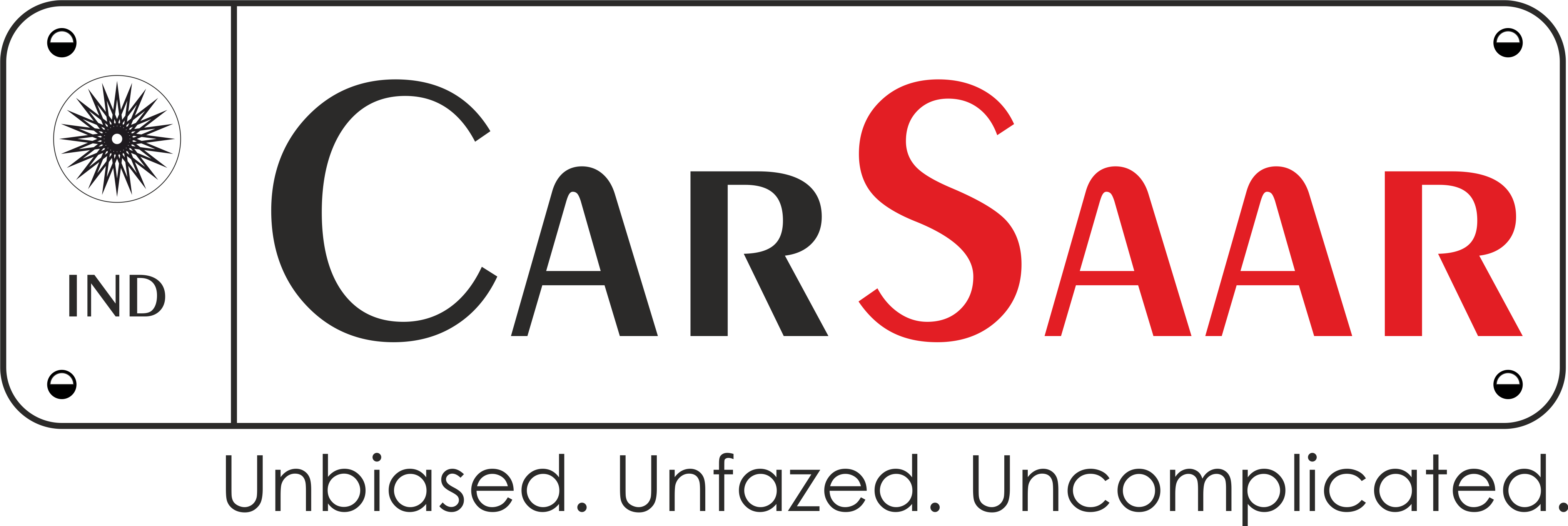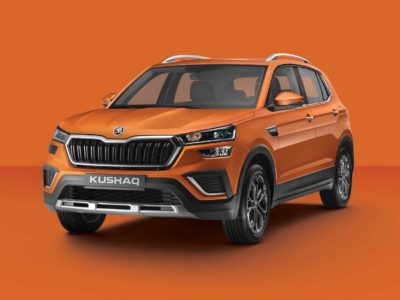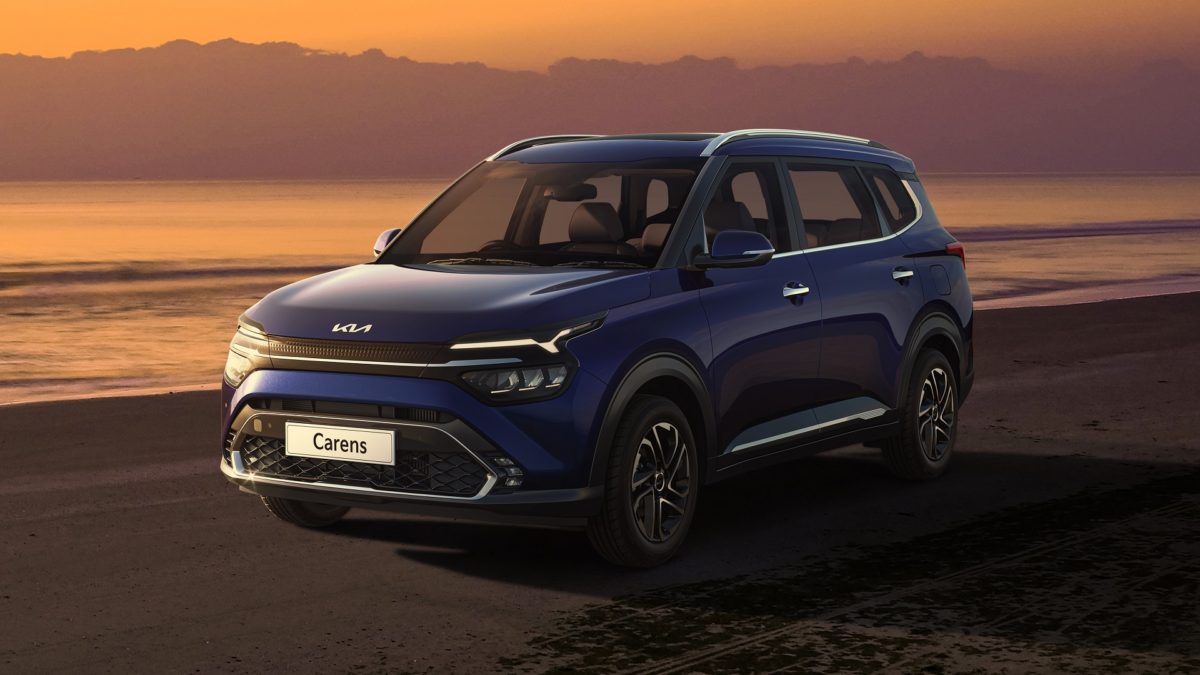Saar: The fastest seven-seat SUV around the Nürburgring is powered by the most powerful diesel engine ever fitted to a Skoda model.
After a bunch of teasers, a few amongst which we couldn’t even cover, Skoda has unveiled the SUV that everyone has been talking about. It is, of course, the Kodiaq RS. The seven-seater is the first SUV in Skoda’s history to flaunt the RS badge and based on what it has achieved around the Nürburgring, it surely deserves to. The Skoda Kodiaq RS lapped the ‘Green Hell’ in 9 minutes and 29.84 seconds. No other seven-seat SUV has posted a lap record quite like that.
Powering the Kodiaq RS is the most powerful diesel engine ever fitted to a Skoda model. It is a 2.0-litre, 4-cylinder mill that is boosted by two turbochargers. The result is 240PS of power and 500Nm of torque. Mated to it is a 7-speed DSG gearbox which routes the power to the road via an all-wheel-drive system. Skoda claims that the Kodiaq RS can hit 100kmph from a standstill in 7.0 seconds and clock 220kmph flat out. To keep the emissions in check, the Skoda Kodiaq RS’ engine features direct injection, a start-stop function and brake recovery system.
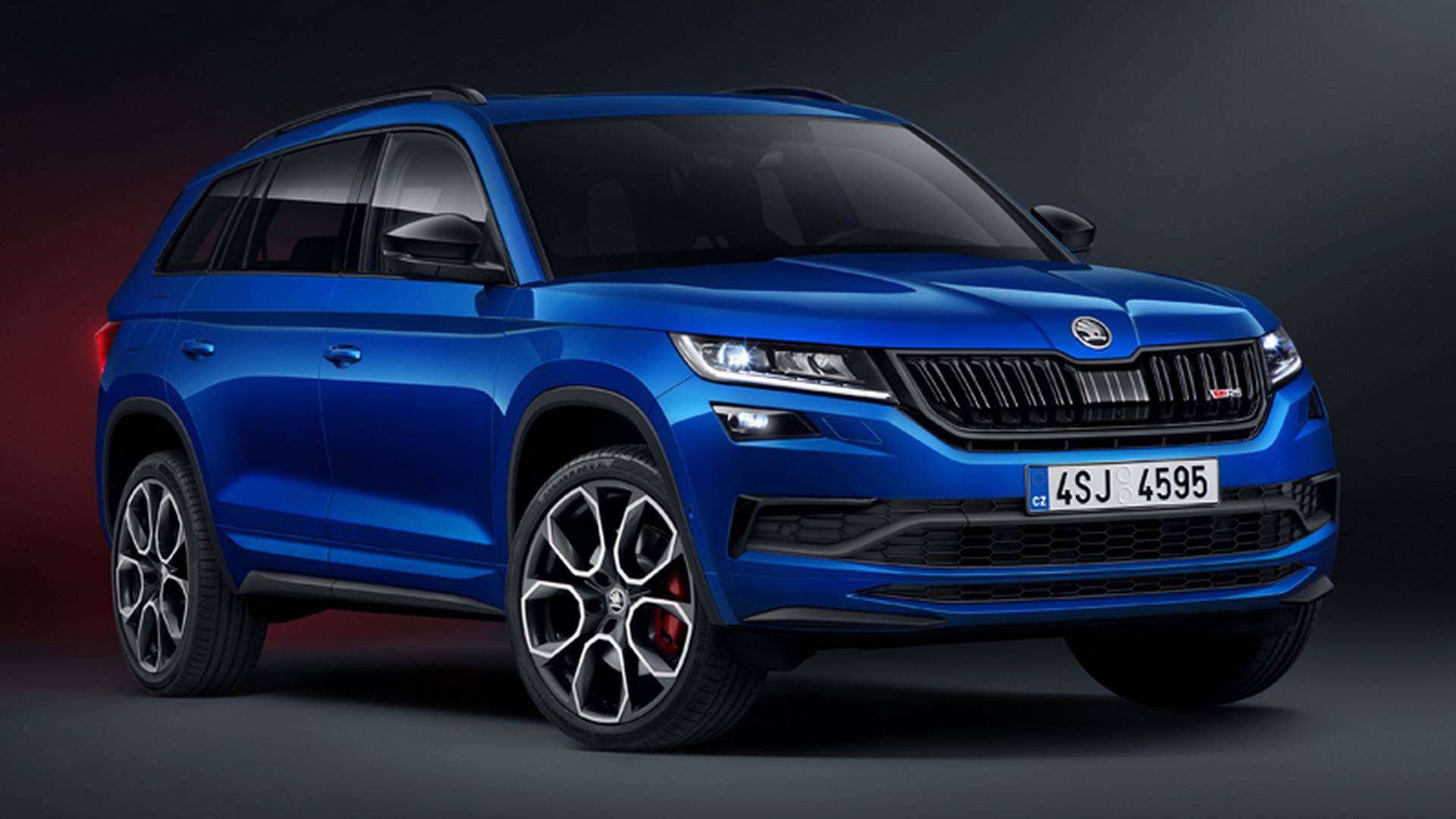
The supporting machinery to the engine and the transmission is sophisticated too. The Skoda Kodiaq RS gets an adaptive Dynamic Chassis Control (DCC) with Driving Mode Select. In simple words, the system adjusts the springs and shock absorbers of the SUV to suit the terrain and driving style. There are six different programmes to choose from – Eco, Comfort, Normal, Sport, Individual and Snow.
To make it stand out from the rest of the Kodiaq range, the folks over at Skoda garnished the RS variant with several sporty accents. On the outside, the radiator grille, window frames, ORVMs and roof rails all come in gloss black. Moreover, the Kodiaq RS is the first Skoda model to flaunt 20-inch alloys as standard. And to let thick-heads know that it really is a special Kodiaq, the grille and the tailgate bear the vRS logo.
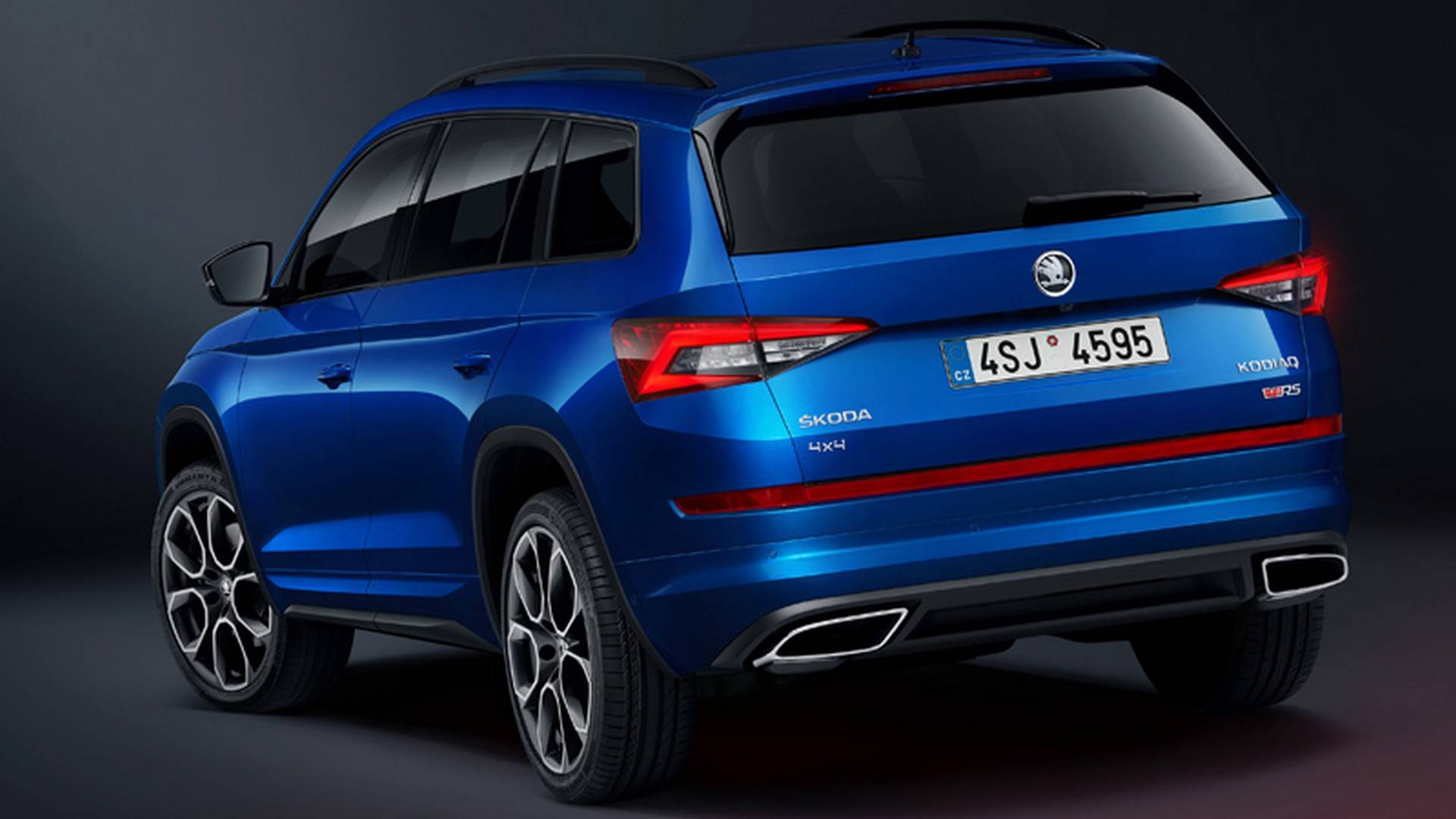
No points for guessing, the sporty makeover is carried inside the cabin too. The seats, for instance, are draped in perforated Alcantara and carbon leather. They also flaunt contrasting, red, RS-specific stitching in a diamond-cross design and matching red surface with the new vRS logo below the fixed headrests. The said logo also appears on the gearshift knob and the steering wheel. The red stitching is also carried over to armrests and the steering wheel. Even the door trims have been finished in the same design and material as the sports seats. The instrument panel is finished in a carbon décor. The standard kit includes door sills with Kodiaq logo and an LED package covering ambient lighting. The roof lining is finished in black and the pedals get stainless steel covers.
The Skoda Kodiaq RS is also the first car in the company’s portfolio to house something called a Dynamic Sound Boost (DSB). The system works on the data from the in-car electronics to make the car’s acoustic character more intense. For instance, it works in tandem with the Kodiaq RS’ Driving Mode Select. Based on what driving mode is selected, the DSB enhances the sound of the exhaust electronically and delivers it inside the cabin to wow the passengers. And, as revealed in one the teasers, the Skoda Kodiaq RS comes with a Virtual Cockpit as standard.
The Kodiaq RS is certainly one of its kind. And since it comes with a Skoda badge, it is likely to be good value too. It will go on sale in Europe by the end of this year. Currently, there is no word whether Skoda will bring the Kodiaq RS to India. With Skoda Auto India leading Volkswagen Group’s India 2.0 project, the go-fast SUV doesn’t really fit the bill. But, if it comes to India even as a direct import, it will most probably be priced around the BMW X3 money. We’ll get one in a heartbeat! That’s if we had that kind of money to spare!

